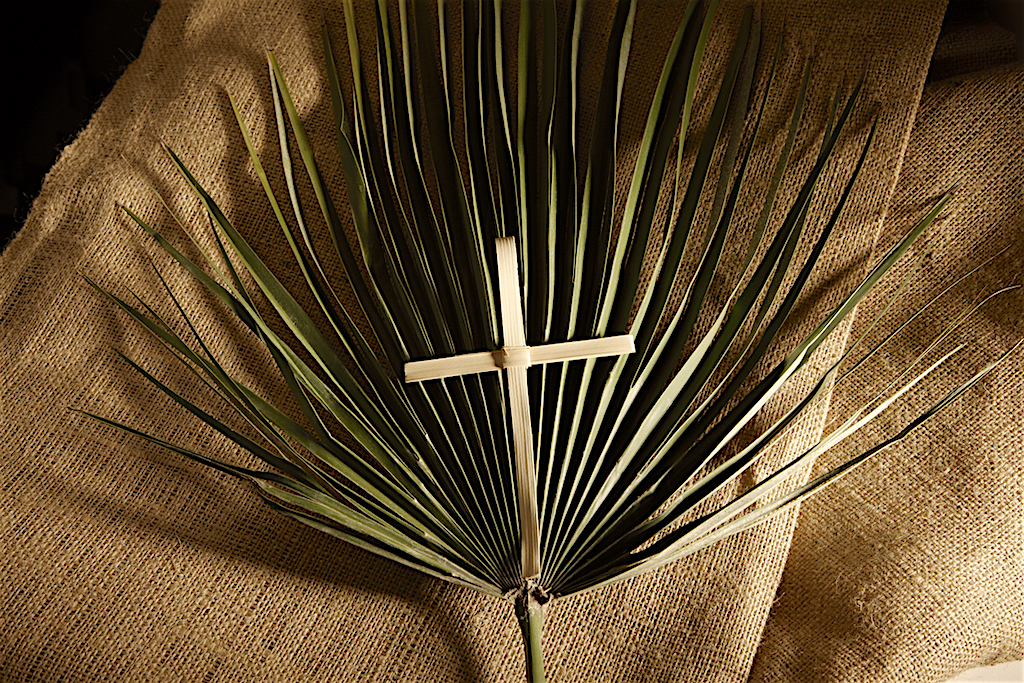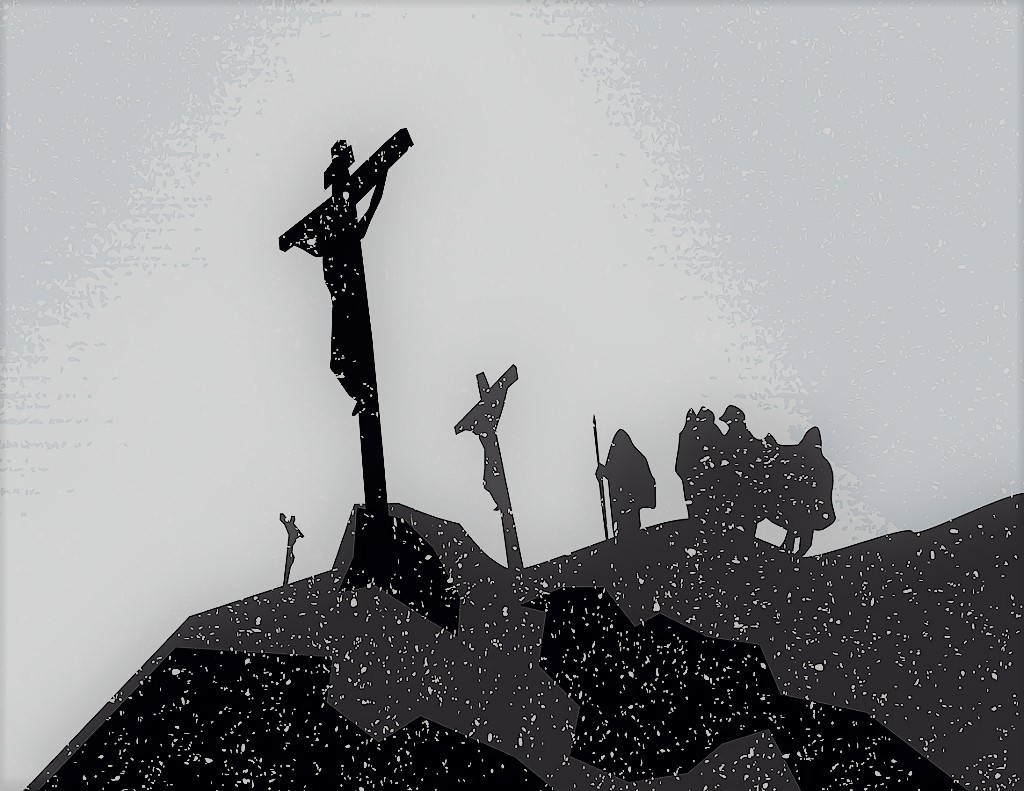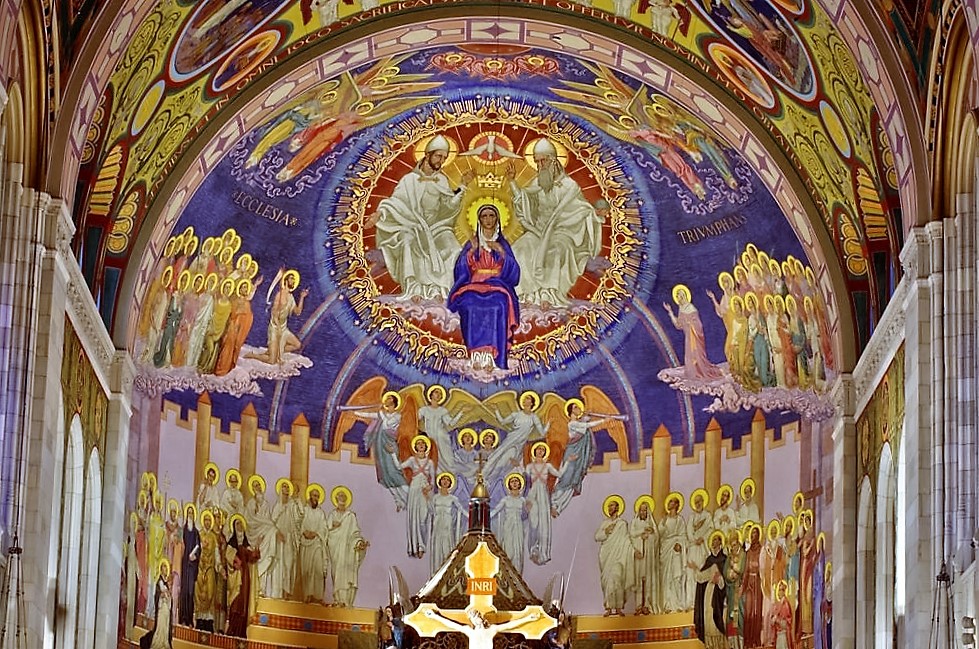“My God, my God, why have you abandoned me” (Ps 22:2)?
These words of Jesus spoken while hanging on the cross are among the most disturbing words in the Gospels. Jesus’ cry of abandonment from Psalm 22 is troublesome. Did Jesus give up trust in his most dear Father during the crucifixion? Did Jesus actually yield to despair on the cross? How can we understand this desperate cry?
Vatican Council Two’s document “Church in the Modern World” helps understand the cry. The document recalls our Christian belief that Jesus’ divinity did not eclipse the full experience of his humanity: “For by his Incarnation the Son of God united himself in some fashion with every man. He worked with human hands, He thought with a human mind, He acted by human choice, and loved with a human heart. Born of the Virgin Mary, He has truly been made one of us, like us in all things except sin”(#22).
As fully human Jesus on the cross tasted the depths of human suffering on every level – physical, psychological and spiritual.
Recall Jesus was undergoing the most painful and shameful death devised by the Roman authorities. Adding to the shame, He was crucified between two known criminals.
Recall also that Jesus was alone, having been rejected by everyone: religious authorities and fellow citizens, disciples and friends. It is poignant to recall that of his chosen twelve apostles one betrayed him, another denied him and all abandoned him. Only his mother and the two Marys were at the cross.
And perhaps most painful of all, Jesus was a failure. Jesus failed to accomplish the mission given him by his Father — preaching the Good News of the Kingdom of God. Even his apostles did not understand this message.
And on the cross Jesus felt abandoned — he even felt abandoned by his Father: “My God, my God, why have you abandoned me?”
In Holy Week we seek the special grace of being united to Jesus as we ourselves cope with the suffering in our troubled world and in our personal lives. Like Jesus we may feel abandoned by God. But like Jesus we are not alone. Just as the Father was with Jesus transforming Jesus through suffering, so Jesus is now with us transforming us!
And don’t we Christian move toward maturity in our faith as we embrace our crosses and unite them with with Jesus’. I have learned this truth slowly. As I have brought my sufferings to Jesus and dialogued with him on similar sufferings, I have been transformed, experiencing weakness to strength through faith.
Paul catches the heart of faith for Jesus and for us: “He humbled himself, becoming obedient to the point of death, even death on a cross. Because of this, God greatly exalted him and bestowed on him a name which is above every name, that at the name of Jesus every knee should bend”(Phil 2:8-10).
 Dick Hauser a Jesuit priest, born in Milwaukee in 1937. The oldest of six children, entering the Jesuits in 1955 and teaching in the theology department at Creighton since 1972. “My primary interest is in contemporary Christian spirituality. I’ve written three spirituality books: In His Spirit: A Guide to Contemporary Spirituality; Moving in the Spirit: Becoming a Contemplative in Action, both published by Paulist Press and Finding God in Troubled Times: The Holy Spirit and Suffering, published by Loyola Press.”
Dick Hauser a Jesuit priest, born in Milwaukee in 1937. The oldest of six children, entering the Jesuits in 1955 and teaching in the theology department at Creighton since 1972. “My primary interest is in contemporary Christian spirituality. I’ve written three spirituality books: In His Spirit: A Guide to Contemporary Spirituality; Moving in the Spirit: Becoming a Contemplative in Action, both published by Paulist Press and Finding God in Troubled Times: The Holy Spirit and Suffering, published by Loyola Press.”



 Chris Stefanick is an internationally acclaimed author and speaker, who has devoted his life to inspiring people to live a bold, contagious faith. Archbishop Charles J. Chaput, OFM Cap calls Chris, “one of the most engaging young defenders of the Christian faith on the scene today.” Chris is also the founder of Real Life Catholic, a Denver-based non-profit which operates as the headquarters for Chris’s various initiatives. Above all, Chris is proud to be the husband to his wife Natalie and father to their six children. To learn more about Chris’s work, please visit:
Chris Stefanick is an internationally acclaimed author and speaker, who has devoted his life to inspiring people to live a bold, contagious faith. Archbishop Charles J. Chaput, OFM Cap calls Chris, “one of the most engaging young defenders of the Christian faith on the scene today.” Chris is also the founder of Real Life Catholic, a Denver-based non-profit which operates as the headquarters for Chris’s various initiatives. Above all, Chris is proud to be the husband to his wife Natalie and father to their six children. To learn more about Chris’s work, please visit: 



